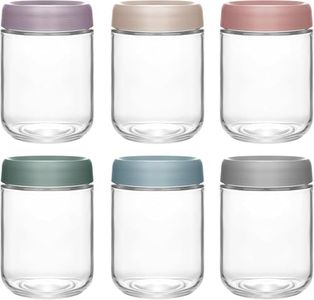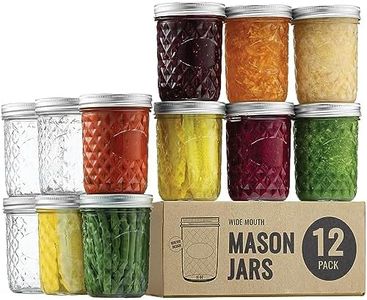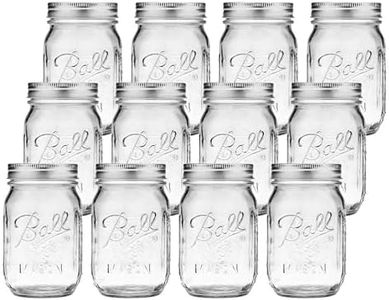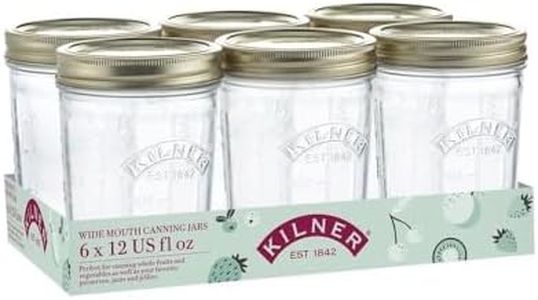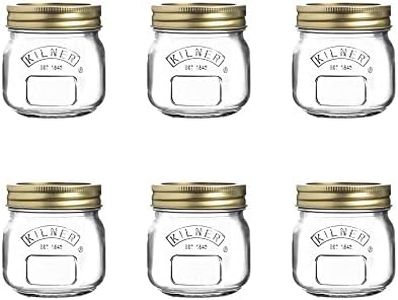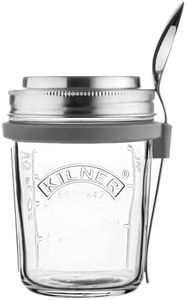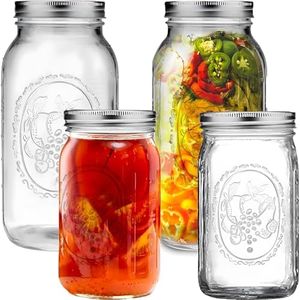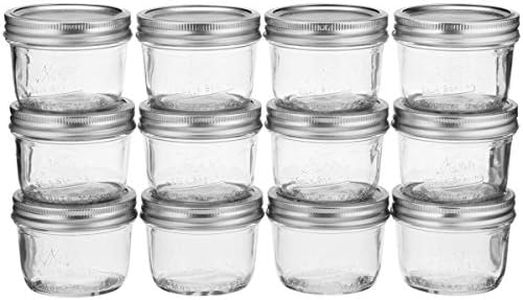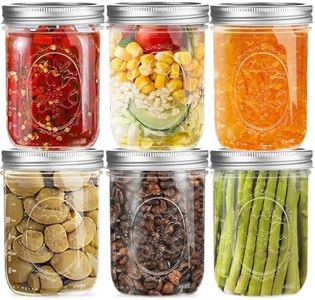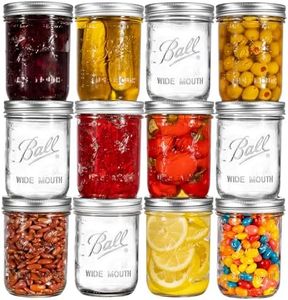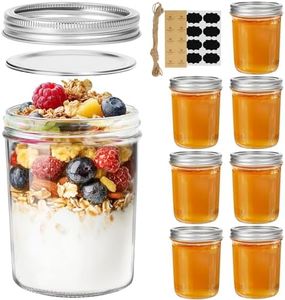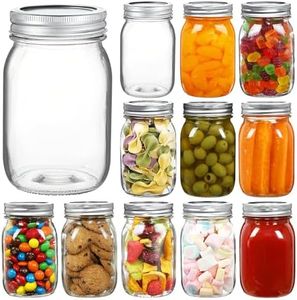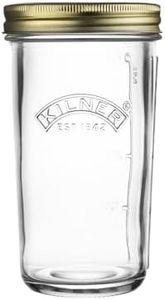We Use CookiesWe use cookies to enhance the security, performance,
functionality and for analytical and promotional activities. By continuing to browse this site you
are agreeing to our privacy policy
10 Best Mason Jars
From leading brands and best sellers available on the web.By clicking on a link to a third party's website, log data is shared with that third party.
Buying Guide for the Best Mason Jars
Mason jars are a versatile staple, commonly used for preserving food, canning, storage, drinks, and crafts. Picking the right mason jar means thinking carefully about how you'll use it most often. By focusing on a few key aspects, you can find a jar that's the best fit for your needs—whether you're making jam, storing pantry items, or using them for decorative purposes. Understanding the key features will help you narrow your choices and avoid unnecessary hassle.Size (Capacity)Size refers to how much a jar holds, usually measured in ounces or milliliters. This is important because your intended use determines the right size. Mason jars often come in sizes like 4oz, 8oz, 16oz (pint), 32oz (quart), and even larger. Small jars (4oz-8oz) are great for jams, sauces, and spices. Medium jars (16oz-32oz) suit canning vegetables, storing leftovers, or holding beverages. Larger jars are for bulk storage or fermenting. Always match the jar size to your storage or serving needs—a too-large jar wastes space and may not seal as well for small batches, while a too-small jar won't fit your contents.
Mouth Type (Regular or Wide)Mouth type describes the opening width at the top of the jar, usually categorized as regular or wide mouth. This matters for both filling and accessing your jar's contents. Regular mouth jars have a narrow opening, which is good for liquids and smaller items. Wide mouth jars have broader openings, making them easier to fill with chunky foods like pickles or to clean. For most general kitchen tasks, wide mouth jars are the most versatile, while regular are better for precise pours or preserving liquids.
Material Quality and ThicknessThe quality and thickness of the glass affects the durability of the mason jar, especially under heat or pressure (like during canning). Thicker, high-quality glass is less likely to crack or break and can safely handle temperature changes. If you're using jars for canning, always ensure they are made from tempered or specifically rated glass. For non-canning uses, thickness still matters for longevity, but the requirements are less strict.
Lid Type (One-piece or Two-piece)Mason jars commonly use two main lid designs: the two-piece lid (a flat disc with a seal and a screw-on ring) or a one-piece screw top. Two-piece lids are best for traditional canning because they allow air to escape and create a vacuum seal. One-piece lids are easier for everyday storage and quick access but aren't suitable for long-term canning. Choose two-piece for preserving foods, and one-piece for easy pantry storage or crafts.
Dishwasher and Freezer SafetySome mason jars are rated as dishwasher and freezer safe. Dishwasher-safe jars are easy to clean and sanitize, which is convenient for daily use. Freezer-safe jars are made to withstand expansion without cracking, useful for homemade freezer jams or cooked leftovers. If you want maximum versatility and easy maintenance, check labels for safety certifications, especially if you plan on using your jars in these ways.
Shape and DesignMason jars come in different shapes—some are straight-sided, while others have shoulders (rounded top corners). Straight-sided jars are easier to fill, clean, and are better for freezing. Decorative or specialty designs work well for gifts or crafts. Choose your jar shape based on how you'll store and retrieve items or if presentation is important.
